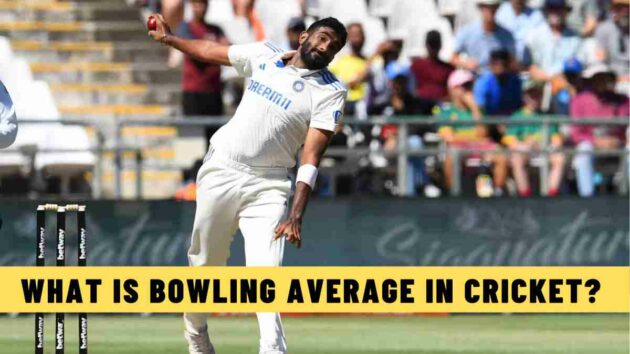Cricket, more or less, revolves around the statistics of individual players. Batters and bowlers have their own set of stats, which give a glimpse into an individual’s performance.
Speaking of bowlers, their performance is measured via average, strike rate, and economy rate. Knowing everything at once may be overwhelming for you, so here we’ll understand the bowling average.
What is the bowling average in cricket?
The bowling average depicts a bowler’s ability to take wickets while conceding fewer runs. You can figure out the bowling average by dividing the total runs conceded by the total wickets picked up by a bowler.
The lower the bowling average, the better it is for any bowler. And it shows their control over giving away few runs while grabbing wickets.
Also Read | What is Run Rate in Cricket?
How to calculate the bowling average?
You can use a simple math equation to calculate a bowler’s bowling average. Go to any bowler’s profile, choose a format, and note down the overall runs conceded by them, along with their total wickets.
Now, insert those 2 figures in this formula:
Bowling Average = Total Runs Conceded / Total Wickets Taken
And you will get your answer.
To help you understand it better, let’s look at an example.
Here, we’ll consider the stats of Muthiah Muralidaran in Test cricket.
The legendary Sri Lankan bowler bagged 800 wickets — the most in Tests — while giving away 18180 runs in 230 Test innings. Now, if we put those numbers in the formula, we get 22.72 as Muralidaran’s career Test bowling average. It’s that simple!
The same can be done for a single innings of a cricket match.
Let’s say Jasprit Bumrah took 2 wickets while giving away 45 runs in 10 overs in an ODI match. The pacer’s bowling average will be 22.5.
Read Next | What is a Yo-Yo Test in Cricket? – Explained











